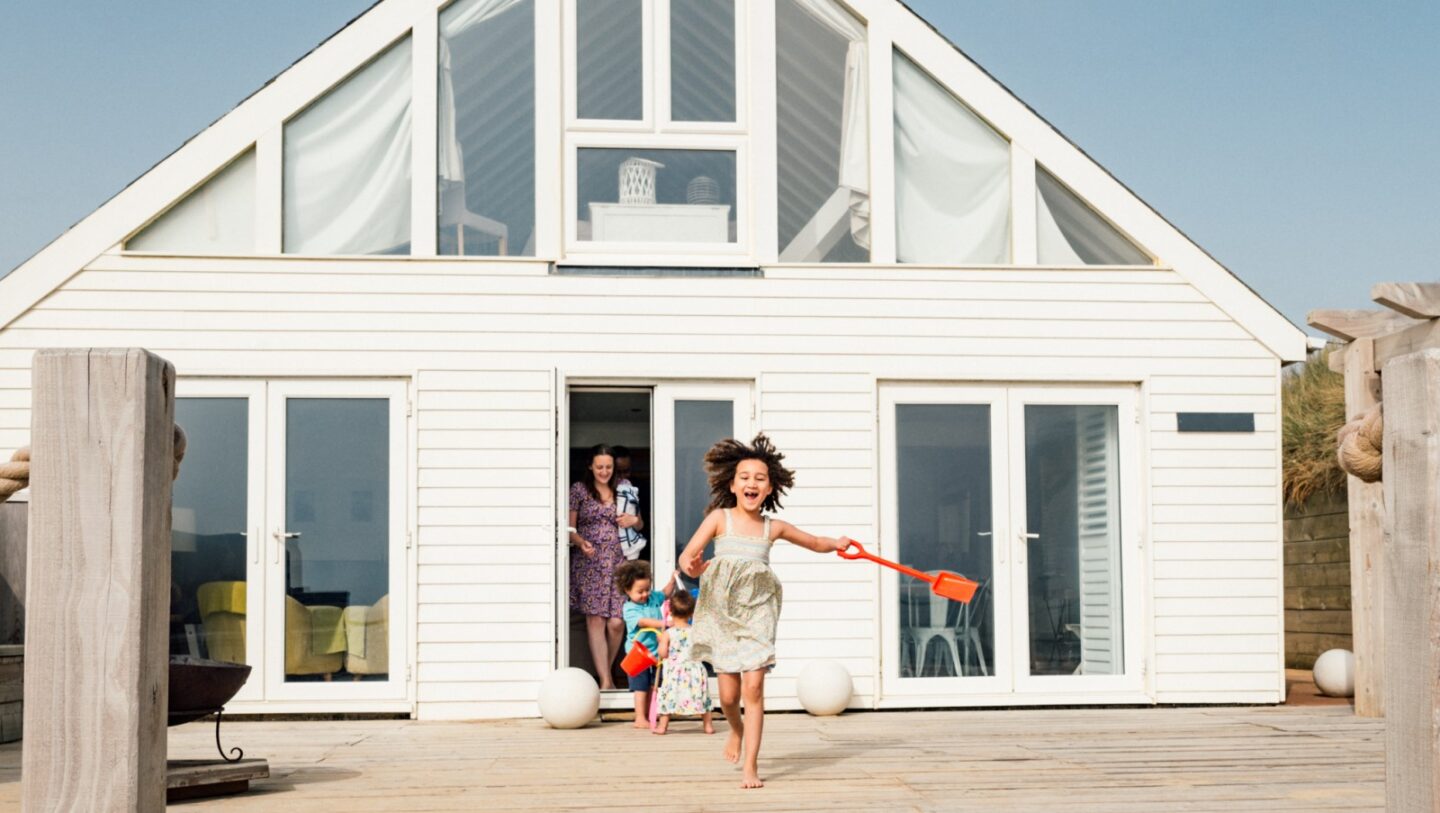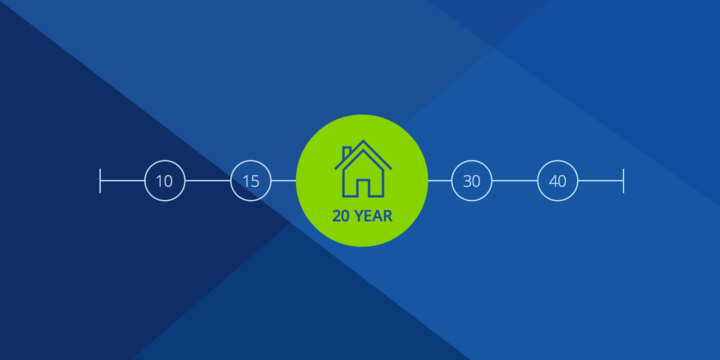Cash-Out Refinance on Investment Property


Written by Tali Bendzak on May 12, 2022
Property values have been on the rise across most of the U.S., and your rental property may have gained equity that can be used to reinvest and further grow your profits. If you have a one-to-four unit residential property that can be occupied by a renter year-round, you may qualify for a rental property cash-out refinance.
What is a cash-out refinance?
A cash-out refinance lets you withdraw cash totalling the difference between your property’s current market value and the existing mortgage principal owed, minus closing costs. To do a cash-out refinance on an investment property, you’ll take out a new mortgage for the current property value. The new loan will need to be a conventional loan with either a fixed or adjustable rate. Unlike with a primary residence, FHA, VA and USDA loans can’t be used to cash-out refinance an investment property.
How does a cash-out refinance work on an investment property?
In general, when you make your scheduled mortgage payments and the housing market improves, your property’s value typically increases and you build equity in that property. With a cash-out refinance on an investment property, you can pull some of that equity out as cash, using it however you see fit. The key difference between a cash-out refinance on your primary residence and a cash-out refinance on an investment property is eligibility requirements are usually more strict for non-primary residences — since they tend to carry more risk for the lender.
Example of a rental property cash-out refinance
Let’s say you financed the purchase of a $300,000 single-unit rental property a few years ago and have a remaining loan balance of $200,000. Today, the property appraises for $400,000, giving you $200,000 of available equity. After closing costs on the new loan amount, you’d have roughly $66,000 in cash available to cash-out on your investment property.
| Purchase price | Appraised value | Available equity | New loan amount | LTV | Closing costs (assuming 3%) | Possible cash back |
|---|---|---|---|---|---|---|
| $300,000 | $400,000 | $200,000 | $300,000 | 75% | $9,000 | $66,000 |
Here is how the example above would look step-by-step when figuring out the amount of cash you can withdraw with an investment property cash-out refinance:
1. Check that your current loan-to-value ratio (LTV) is less than 75%
You can do this by dividing your current loan balance by your property’s appraised value. The lower your LTV ratio, the more likely you are to receive a better interest rate.
Current LTV ratio: $200,000 / $400,000 = 0.5 or 50%
2. Calculate your new loan amount
Multiply your property’s appraised value by the maximum allowable LTV. For a single-unit investment property, you can borrow up to 75% LTV against the current value of the property.
Maximum new loan amount: $400,000 x 0.75 = $300,000
3. Determine the maximum cash-out value
Subtract your outstanding loan balance on your current mortgage from the new loan amount.
Maximum cash-out value: $300,000 - $200,000 = $100,000
4. Deduct the equity you’ll keep in the investment
On a single-unit investment property, 25% of the equity must remain in the property. Multiple the new loan amount by 25%, and then subtract the difference from the original cash-out value.
Equity kept in property: $100,000 x 0.25 = $25,000
Cash-out value afterward: $100,000 - $25,000 = $75,000
5. Estimate your total cash back
Subtract closing costs from the cash-out value. Closing costs typically range between 3% and 6% of the loan amount. We’ll use 3% closing costs for this example.
Closing cost: $300,000 x 0.03 = $9,000
Est. cash back: $75,000 - $9,000 = $66,000
While doing all this math manually can be taxing, Zillow offers a refinance calculator that can help you easily see the potential refinance savings.
Eligibility requirements for an investment cash-out refinance
Individual lenders can set their own minimums for LTV, debt-to-income (DTI) ratio, credit score and cash reserves. While not all cash-out refinances require you to have a cash reserve saved in the event of an emergency, lenders generally like investment property owners to have cash on-hand to cover the cost of the mortgage should the property go vacant for a period of time.
In the table below, you’ll see the typical minimum requirements for a cash-out refinance on a single-unit investment property and 2-4 unit investment properties.
| 1 unit | 2 - 4 units | |
|---|---|---|
| Retained home equity (minimum) | At least 25% | At least 30% |
| Debt-to-income ratio (maximum) | 45% or less | 45% or less |
| Credit score (minimum) | 620 - 700 | 620 - 700 |
| Cash reserve (minimum) | Equal to 6 - 12 months of monthly mortgage costs | Equal to 6 - 12 months of monthly mortgage costs |
| Waiting period after home purchased (or acquired) | At least 6 months. No waiting period if you qualify for an exception. | At least 6 months. No waiting period if you qualify for an exception |
Waiting period exceptions
Most lenders require you to have owned the property for a minimum amount of time before refinancing — this is sometimes called “seasoning”. There are a few times you may be able to qualify for an exception and not have to wait to get a cash-out refinance on an investment property.
- The property was inherited
- The property was legally awarded in a divorce, separation or end of a domestic partnership
- The property was initially purchased with cash and has no liens (such as outstanding property tax due)
- The property was owned prior to closing by a limited liability company (LLC) and then transferred out of the LLC and into your name
Delayed financing exception
If you buy a home with cash or borrowed funds aside from a mortgage loan, you may be able to refinance within six months. This option is often used to free up the cash you spent on the purchase, and it’s available within six months of the initial purchase. Higher mortgage rates and fees may apply, and you’ll have to provide additional documents including:
- Proof that no mortgage was used to purchase the property (a settlement statement, trustee’s deed or similar)
- Proof of the source of funds used to purchase the property (a bank statement, personal loan or HELOC on another property)
- Proof of no existing liens or loans on the property
- A title report confirming you are the legal owner of the property
Cash-out refinance rates on investment property
Any cash-out refinance typically has higher interest rates than your standard rate-and-term refinance. And, interest rates tend to be a bit higher still for cash-out refinances on investment properties compared to a primary residence. In fact, a single-unit investment property typically has an interest rate that is 0.5% to 0.75% higher. If the average interest rate on a conventional cash-out refinance in 2020 was 3.25%, according to data from the Consumer Financial Protection Bureau (CFPB), that would put interest rates on a single-unit investment property at around 3.75% to 4%.
| 1 unit | 2 - 4 units | |
|---|---|---|
| Interest rates | Avg. 0.5% - 0.75% above primary residence rates | Avg. 0.625% - 1% above primary residence rates |
Max cash-out on an investment property
The max amount of cash you can take out depends on the number of rental property units you own and whether you qualify for a waiting period exception. The maximum LTV ratios set by Freddie Mac are 75% for a single-unit investment property and 70% for a 2-4 unit investment property. If you qualify for a waiting period exception, the max LTV is capped at 70% regardless of the number of units. Lenders may set their own max LTV following these guidelines.
| 1 unit | 2 - 4 units | Waiting period exception | |
|---|---|---|---|
| Max cash-out | 75% LTV | 70% LTV | 70% LTV |
Ways to spend your cash
With a cash-out refinance on investment property, there are no restrictions on what you can do with your cash once you receive it. Many investors choose to use the funds they receive to reinvest — one way to do this is to buy another investment property. Here are some of the most popular things investors do with the cash they receive:
- Buy another property to diversify their investment portfolio
- Make improvements to a rental property to increase its value and earn more rental income each month
- Pay off other investment property loans
- Build a stronger cash reserve
- Pay off high-interest debt to improve credit score
- Buy, build or substantially improve a rental property to deduct mortgage interest at tax time
What is the cash-out refi process?
Whether you’re doing a rate-and-term refinance or a cash-out refinance, the process is generally the same. The primary difference is that a cash-out refinance on investment property usually requires an appraisal that sometimes costs $150 more than a home appraisal on a primary residence. A cash-out refinance will also cap closing costs at 3% of the new loan amount.
After completing the loan application and your loan gets approved, you can usually close within 30-45 days with a cash-out refi on investment property. After a 3-day waiting period, you’ll receive your cash. For a more detailed step-by-step process, read How to Refinance an Investment Property.
Should you get a cash-out refi on investment property?
The decision to do a cash-out refinance on your investment property depends on timing, current refinance rates, your credit profile and your need for the money. You’ll want to be sure that you can pull out enough cash that it’s worth the change in interest rate and additional fees that come along with refinancing. How you acquired the property in the first place (whether with an existing mortgage, in cash, awarded in a settlement or inherited) may impact your decision as well.
According to the CFPB, investment properties with applications for a cash-out refinance in the US were valued at an average of $335,000 in 2020. Of those loan applications, 18% were for cash-out refinancing. When deciding if a cash-out refinance is right for you, always reach out to your mortgage broker or lender to discuss your options.
Alternative loan options for investors
An investment property cash-out refinance isn’t the only option for investors seeking cash. Other popular options include home equity lines of credit (HELOCs), home equity loans and personal loans. Each option has its own benefits and drawbacks.
Home equity line of credit (HELOC)
A HELOC lets you access the equity in your home through a revolving line of credit, which is secured with your home as collateral. It’s a popular option because you don’t have to go through a refinance, but interest rates can be higher — and they’re usually variable. Since you only pay interest on the portion of the credit line you actually use, it can make a great emergency fund. Connect with a lender to learn more about HELOCs.
Home equity loan
A home equity loan gives you a lump sum of cash, secured by the equity in your home. Unlike an investment property cash-out refinance, you won’t have to go through the refinancing process and you won’t receive a new mortgage, but the loan will place two liens on your property. Your home equity loan will be separate from your existing mortgage. To repay the loan, you’ll make fixed monthly payments over a set number of months, often at a higher interest rate than a refinance.
Personal loan
A personal loan is entirely separate from your property and instead is just based on your creditworthiness. Since it’s an unsecured loan, interest rates will be higher than a mortgage, HELOC or home equity loan.
Visit our Mortgage Learning Center for additional resources on refinancing.
Tap into your home equity
Zillow makes it simple to explore your options for a Home Equity Line of Credit.
Zillow Group Marketplace, Inc. NMLS #1303160
Get started


